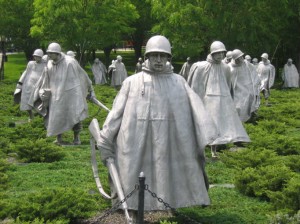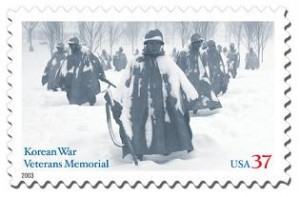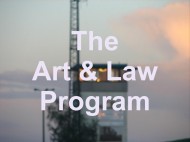Fair Use Is In the Statute, Not the Statue
My good friend, Donn Zaretsky, disagrees with my earlier post concerning Calvin & Hobbes that when it comes to fair use we had it better pre-Cariou disaster. He cites an argument he made in 2009 after the Gaylord Korean War Veterans Memorial trial decision (and pre-appellate decision).

Korean War Veterans Memorial, Washington, D.C. Sculpture designed and copyright owned by Frank Gaylord.
I agree with Donn that fair use can go both ways, but the reason for that is not grounded in the statute; it’s grounded in the fact that judges hastily make fair use opinions based on emotive instincts rather than a rational and reasonable approach to the four fair use factors (which is exactly what happened recently with the Second Circuit catastrophe).
(If you’re wondering what I mean by “emotive instinct,” it’s when judges are eagerly seduced by images and, not wanting to come across as Paleolithic philistines, make a fair use analysis based on the “look” rather than the legal application.)
Thus, a judge’s willy-nilly application of the fair use factors doesn’t mean that fair use (especially pre-Cariou) allows for its unreliable ambiguity. In fact, I believe that fair use could have been clarified in a way that would actually help artists had Judge Batts’ decision — concerning the need to hear an artist’s purpose and intent — been upheld.
Why? Because then all a judge has to do is ask the artist what they intended to “do” (or accomplish, which is pretty much what the first fair use factor asks) with the appropriated work. Under Gaylord, both the photographer, John Alli, and the US Post Office would (assuming they weren’t tempted to lie under oath) tell the truth and explain that their purpose in using an image of the Korean War Veteran’s Memorial was to commemorate the Memorial, which, in my humble fair use opinion, would NOT make it fair use. Why? Because people buying this stamp for .37 cents would be buying it because it depicted the Memorial and not because it depicted some generic-looking sculptures with snow on them or, better yet, because the stamp depicted snow.
Anyway, as I stated in my earlier post concerning Calvin & Hobbes, fair use analysis could have been made much easier. Instead, we are now left with a fair use clusterfuck.
UPDATE: May 16, 2013
Donn replies.
Tags: Art Law, cariou, Copyright, donn zaretsky, fair use, first factor, gaylord, judges, Korean War Veteran's Memorial, prince, second circuit, textual reading, visuality




Comments